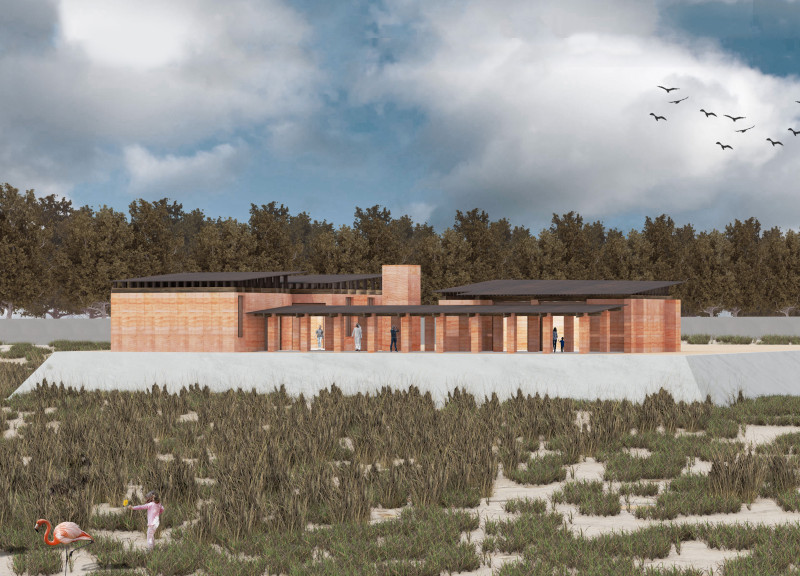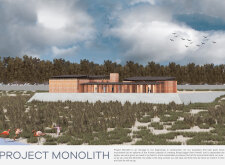5 key facts about this project
Project Monolith is an architectural venture designed to harmonize with its natural setting while promoting sustainability and community engagement. The structure utilizes rammed earth as a primary material, reflecting an approach that honors historical building techniques while addressing modern environmental concerns. It is strategically located to encourage interaction with the landscape, reinforcing the relationship between built environments and their surroundings.
The project serves multiple functions, including educational spaces, a café, and areas for community gatherings. Its design emphasizes flexibility, allowing spaces to adapt to varying needs while ensuring efficient circulation and accessibility. The main entrance leads visitors into a central reception area, which seamlessly connects to the training facilities and exhibition spaces. The layout encourages exploration and fosters a sense of community.
The innovative use of rammed earth walls is a standout feature of Project Monolith. This material offers both aesthetic and functional advantages, providing natural thermal insulation and utilizing local soil to minimize the carbon footprint. Additionally, the design incorporates a sloped roof that enhances natural ventilation and light distribution, further reducing reliance on artificial heating and cooling systems. This thoughtful orientation captures the essence of energy efficiency.
The integration of natural elements into the project enhances user experience. Walkways meander through the landscape, providing engaging pathways that connect different areas of the facility. This encourages visitors to interact with the natural environment, promoting a greater awareness of ecological stewardship. The architectural design emphasizes functionality while maintaining a connection to history and nature.
The architectural approach focuses on adaptability, ensuring the facility can accommodate a range of community activities without compromising its structural integrity. Spaces such as the training center and display areas are designed for versatility, allowing alterations in configuration based on various events and community needs.
Explore the project presentation for more detailed insights into the architectural plans, architectural sections, and the unique architectural ideas that define Project Monolith. This venture provides a comprehensive example of how architecture can effectively merge function with respect for historical context and environmental awareness.






















































